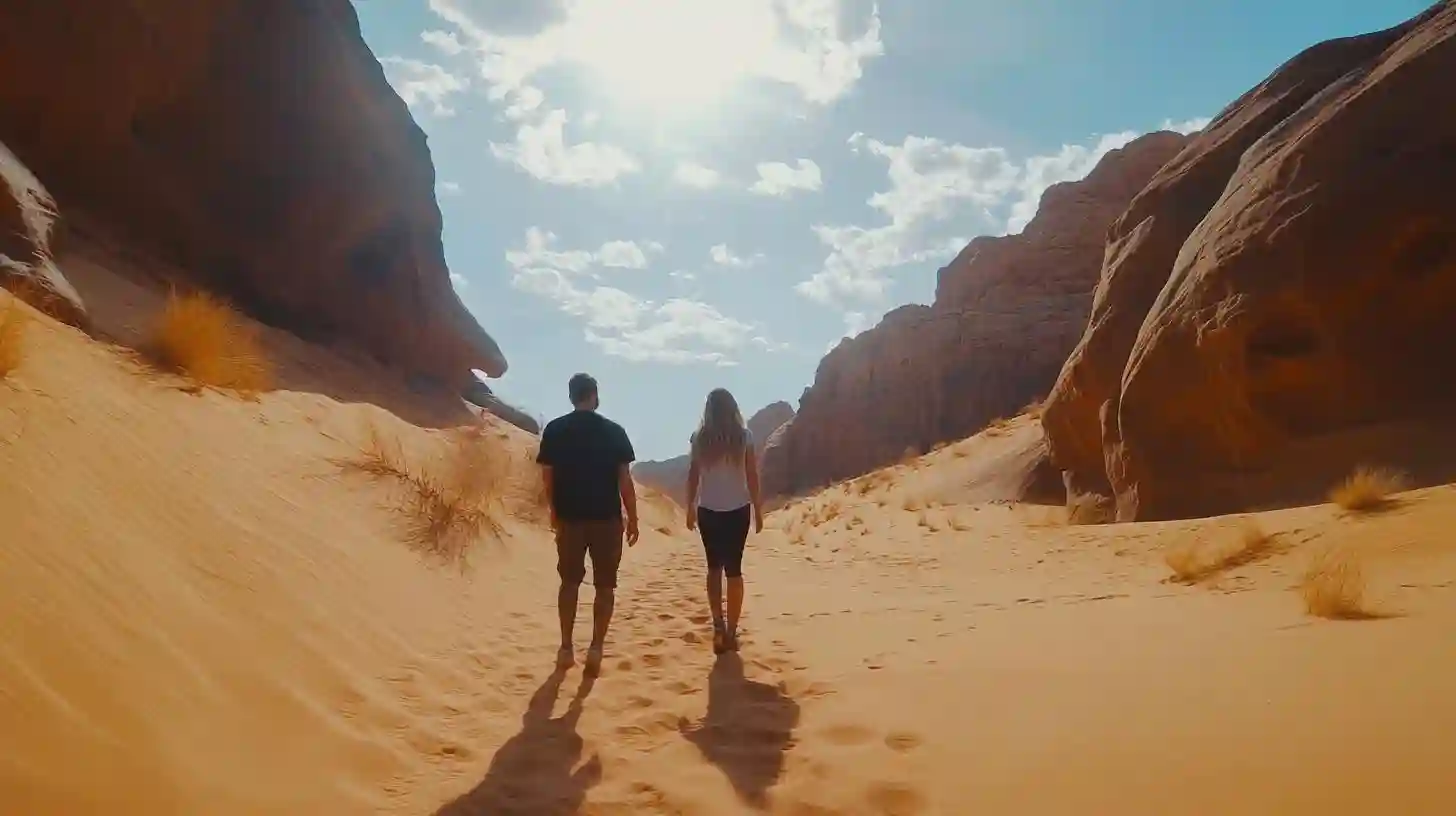
Knowledgetrovehq

Antelope Canyon, located in the American Southwest near the town of Page in Arizona, stands as a breathtaking testimony to nature's artistry and geological marvels. This stunning slot canyon is renowned for its wave-like structure and vibrant colors that dance beneath the sunlight, capturing the hearts and imaginations of visitors from around the world. Carved by the relentless forces of nature over thousands of years, Antelope Canyon has become one of the most photographed natural wonders, drawing photographers, adventurers, and nature lovers alike.
The canyon's formation is attributed to flash flooding and erosion, creating narrow passages and soaring walls that twist and turn in mesmerizing patterns. Each passage is a unique experience with its own character, and the interplay of light and shadow makes it a living canvas. As visitors journey through Antelope Canyon, they witness the sheer magnificence of the sandstone walls that rise to impressive heights, often creating the illusion of waves frozen in mid-motion. This distinctive feature is what sets Antelope Canyon apart and adds to its allure.
The canyon exists in two distinct sections, often referred to as Upper Antelope Canyon and Lower Antelope Canyon. Each section offers a different experience, showcasing variations in color and light, which change dramatically as the sun moves across the sky. The Upper Antelope Canyon, known for its accessibility and grandeur, is particularly famous for the light beams that pour down into the narrow opening, especially during midday when the sun is at its peak. These beams create an ethereal atmosphere that enchants visitors and photographers alike, making it one of the most sought-after subjects in landscape photography.
Conversely, Lower Antelope Canyon offers a more rugged experience, with narrower passageways and a series of ladders that must be climbed to navigate its winding trails. This section appeals to those seeking a more adventurous exploration. Regardless of which section one visits, the breathtaking formations and rich hues of the sandstone are a feast for the eyes, showcasing vibrant reds, warm oranges, and subtle purples that shift with the changing light.
Beyond its visual splendor, Antelope Canyon holds cultural significance for the Navajo people, who consider the site sacred. The canyon's name originates from the Navajo language, with "Antelope" referring to the indigenous antelope that once roamed the area. Navajo guide services often lead tours through the canyon, providing insights into the culture, history, and spiritual significance of this remarkable site. Engaging with the local guides enhances the experience, allowing visitors to appreciate the landscape not only for its beauty but also for its rich heritage.
Access to Antelope Canyon is regulated, ensuring the preservation of this natural wonder while managing the influx of tourists eager to explore its depths. Visitors are required to book guided tours, which not only promote sustainability but also help maintain the safety of those venturing into the canyon. The tours vary in length and depth, catering to different interests and preferences. Many choose to embark on a photography-focused tour, capturing the canyon's beauty at optimal times with the guidance of experienced photographers who know the best angles and lighting conditions.
Alluring as it may be, it is important to respect the delicate ecosystem of Antelope Canyon. The constant flow of visitors can impact the fragile sandstone formations and surrounding environment. Travelers are encouraged to follow guidelines set forth by local authorities to ensure future generations can also experience the canyon's breathtaking beauty. By maintaining a respectful attitude towards the natural world, visitors can play an essential role in preserving the integrity of this iconic landmark.
While a trip to Antelope Canyon is often described as a bucket-list experience, its allure extends far beyond mere sightseeing. The interplay of light and shadow, the intricate sculpting of the rock, and the sense of connection to the land create profound moments of awe and reflection. Many leave Antelope Canyon with memories that are etched in their hearts and minds, forever captivated by the wonder of nature's grandeur. This stunning slot canyon not only exemplifies the remarkable capabilities of erosion but also serves as a reminder of the beauty of our planet and the importance of protecting it for future generations to enjoy.